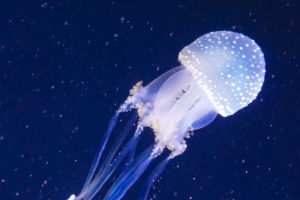Dolphins are mammals and need to breathe, so when a small or injured dolphin encounters difficulty, the most important thing is to reach the surface as soon as possible to breathe.
Other dolphins will often assist in this effort out of care and concern for their own kind. Studies have also shown that dolphins have a strong curiosity about objects floating in the sea and will often push them to the surface.
Mother dolphins also play a protective role for their young. Dolphin calves are vulnerable to shark attacks, so mother dolphins pay close attention to the movements of sharks and actively drive them away to protect their offspring.
Furthermore, dolphins are naturally active creatures and enjoy playing and exploring the ocean. They often take the objects they encounter as toys and hold them up. This can lead to them lifting people in deep water to the surface, mistaking them for a new toy to play with.
Scientists have found that in addition to lifting their own kind and humans, dolphins also lift other marine animals such as turtles, and even non-living objects like submerged wood.
This behavior is believed to be a result of their high IQ and large brain capacity. Studies have shown that dolphins' brains weigh about 1.17 percent of their body weight, while human brains account for 2.1 percent of their body weight, indicating that dolphins have a relatively large brain capacity.
Additionally, some researchers believe that dolphins have the ability to sense emotions, not only of their own kind but also of humans. However, this has not yet been scientifically proven.
It is important to note that not all dolphins will come to the aid of people in difficulty and that luck also plays a role in these rescue scenarios. Despite this, the reputation of dolphins as docile and helpful creatures has been cemented in people's minds due to media coverage of real-life rescues and their positive interactions with humans.


